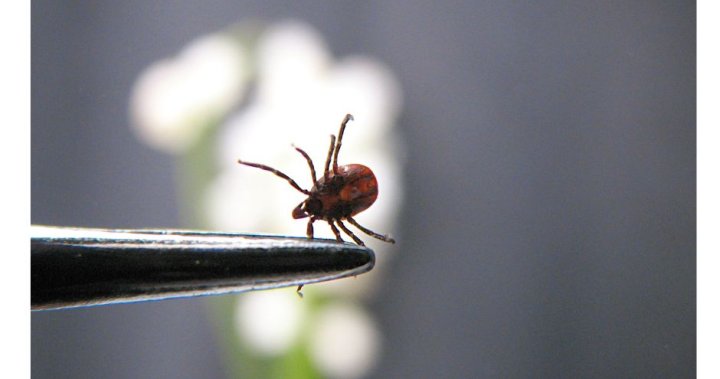Tick season is currently underway in Saskatchewan, and the veterinary college at USask is working to educate pet owners on how to keep themselves and their animals safe from ticks. Veterinary microbiology professor Emily Jenkins advises pet owners to remove ticks before they attach and engorge, as this is best for everyone. Ticks are seen in abundance during breaks in rain showers, as they come out to feed during these periods. Ticks tend to attach to dogs in areas like the armpits, ears, and other places where they can easily hide. Jenkins recommends using oral or topical products for dogs and cats that can provide up to a month of protection from ticks, and encourages pet owners to consult with a vet before purchasing any products from a pet store.
It is important for pet owners to read the fine print and be cautious when choosing tick prevention products, and Jenkins emphasizes the importance of conducting regular tick checks on both pets and humans. She advises doing tick checks four to six hours after being in a tick habitat, and even up to 24 hours later. USask utilizes a public submission service to keep track of the tick population each year, where members of the public can send pictures of ticks found on themselves or their pets for tracking purposes. Jenkins mentions that typically around this time of year, there are between 400 and 500 eTick submissions in the province, with only one black-legged tick carrying Lyme disease being recorded so far this year.
Despite the rainy weather making it challenging for the university to track the tick population themselves, Jenkins notes that the eTick submissions are still around the usual range for this time of year. She explains that the rainy weather may have caused skewing in the numbers, making it difficult to get an accurate representation of the tick population. She also mentions that the black-legged tick, which carries Lyme disease, is usually more active in the fall, so pet owners should remain vigilant throughout the season. By following these precautions and regularly checking for ticks, pet owners can help protect themselves and their animals from tick-borne diseases.
In addition to using oral and topical tick prevention products for pets, Jenkins advises pet owners to consult with a vet to ensure they are using products that are well-tested and labeled for the specific ticks in their area. This extra precaution can help ensure that pets receive the best possible protection from ticks. Regular tick checks on both pets and humans are also essential, as pathogens from ticks can take time to transmit. By conducting tick checks within a few hours of being in a tick habitat, pet owners can reduce the risk of tick-borne diseases for themselves and their animals. By following these guidelines and utilizing the resources provided by USask, pet owners can navigate tick season with confidence and keep their pets safe from tick-related illnesses.
Overall, it is important for pet owners to stay informed about tick prevention strategies and to take proactive measures to protect their pets from ticks. By following the advice of experts like Emily Jenkins and utilizing resources like the public submission service at USask, pet owners can effectively monitor and manage the tick population in their area. With vigilance and regular tick checks, pet owners can help prevent tick-borne diseases and ensure the health and safety of their pets during tick season.













